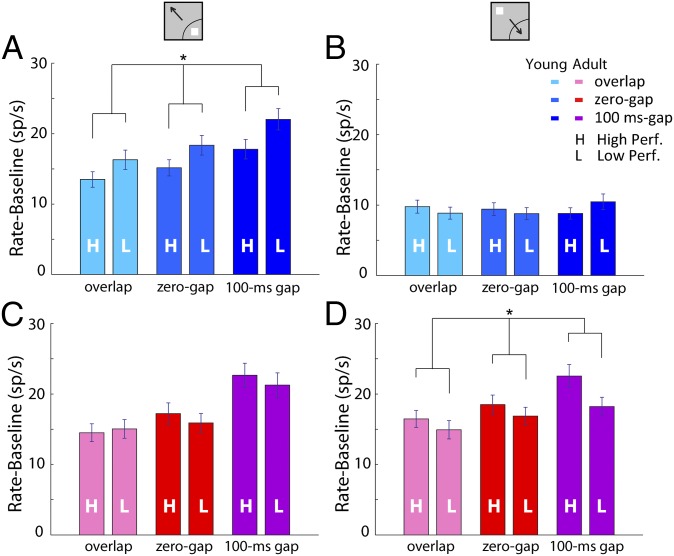Fig. 4.
(A) Average firing rate in each of the variants of the antisaccade task in the young stage for correct trials in behavioral sessions that exhibited above-average (labeled “H”, n = 153 neurons) or below-average performance (labeled “L”, n = 156 neurons). All responses involve the stimulus appearing in the receptive field. Asterisk indicates significant effect on two-way ANOVA. (B) Average firing rate for the same neurons as in A, when the stimulus appeared away from the receptive field. (C) Average firing rate in each of the variants of the antisaccade task in the adult stage for correct trials in behavioral sessions that exhibited above-average (n = 155) or below-average performance (n = 163). All responses involve the stimulus appearing in the receptive field. (D) Average firing rate for the same neurons as in C when the stimulus appeared away from the receptive field.

